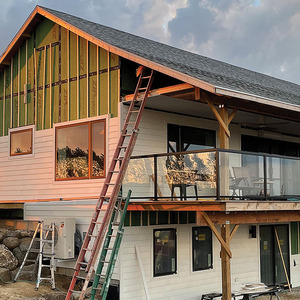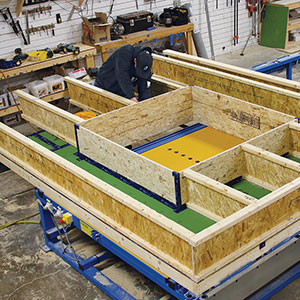Controlling excess job-site moisture during winter months is hard. Excess moisture reaches the dew point and condenses on the coldest surface of the job site, which is usually an expensive unfinished window or door. For years, I brought a dehumidifier to every winter project. Its performance was always marginal. When it is bitter cold, a dehumidifier is useless because glazing and open sheathing areas are oftentimes colder than the condenser coil.
Now I simply create a passive dehumidifier on every fall and winter project. I staple clear polyethylene around the outside of a centrally located window. I attach it loosely to create a “bubble” on the outside of the window. If finished siding is in place, I use tape instead of staples and poke a few drain holes in the bottom. Then I leave the window open full time. Now the coldest surface is the polyethylene, where condensation forms, drips through the drain holes, and makes icicles.
To create the best system, I prefer to use a double-hung window. I open the sashes to the middle to create an opening at the top and at the bottom. This allows for a natural convection current driven by the temperature gradient and by diffusion. For really wet processes, such as floating mud on drywall, I have used a window fan to expel air into this bubble.
Although there is some heat loss, the downside is minimal compared to damaged windows or doors. And this system makes no noise, doesn’t have to be emptied or moved, and always works.
Rick Newman, Saranac Lake, NY
Fine Homebuilding Recommended Products
Fine Homebuilding receives a commission for items purchased through links on this site, including Amazon Associates and other affiliate advertising programs.

Anchor Bolt Marker

Smart String Line

Plate Level



























